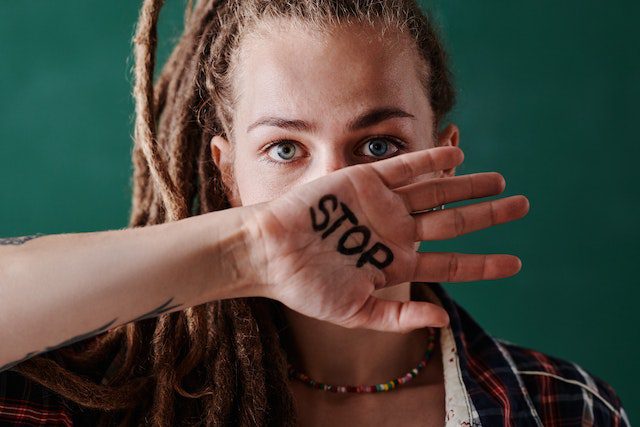What does it mean to end a life? It is said that death is imminent for all born into this world. At the same time, we are taught that it is not for us to decide our death. Or at least that is what all religions and ancestors preach to us. Yet thousands and thousands of people choose to take their lives every year. Every 40 seconds, someone in the world is losing their loved one – a friend, a spouse, a brother, a mother/father, to suicide. It is the second leading cause of death, next to homicide.
What happens after death?
No one knows. Do we have a second life as mentioned in religious texts or as some spiritual gurus claim? I don’t know. I’m an ordinary man. All I know is we have only one life, and everyone has to live it to the fullest. Besides, I know one thing that ensues after death. Sorrow!
When someone dies by suicide, who suffers the most is the family. The impact of suicide is heavy on their family. No one thinks about it. The family carries an indelible mark of guilt, a pang that would haunt them for their lifetime—the guilt points to their inability to stop the person from doing what he did. Many go into PTSD, which may take forever for them to recover. It affects the lives of many, leading to losing jobs, focusing on studies, and even loss of interest in life. One person’s death by suicide can become another person’s life of chaos and despair.
If this is the case with suicide, Why is this still happening around us? Aren’t we supposed to stop the cruelty of killing oneself? But to do that, we must understand the why factor first. Why do people have to kill themselves? Well, the reasons are plenty. People end their life for many reasons. It can vary from as small as failing a school exam to being bullied to something as big as break-ups and financial crises.
No, People do not kill themselves for silly reasons!
If we say so, we are being a little insensitive here. The thing that sounds silly to you can be a reason for someone committing suicide. While failing an exam may be trivial to one person, it can mean losing hope for many.
A thing of this accord means differently to different people. And we are no one to decide whether it is silly. It cannot be weighed without proper understanding. You must put yourself in the other person’s shoes to feel its intensity. And here comes the essential paradox that we lose sight of.
In my life, I’ve seen both students killing themselves for scoring 98/100, leaving them to lose the streak of achieving the total marks in the subject, and students who don’t even care even if they fail to score the pass mark. So, it is not for us to decide. We need to understand this first.
Is suicide a planned event?
Don’t be surprised if I say yes because only 2% of suicides happen with immediate effect or haste. The remaining 98% plan their death. In most cases, when a person intends to die, they show apparent signs. So, what are they? How can you tell if a person is having suicidal thoughts? I’ve written in detail about it in “Spend 40 seconds to save a life.” Kindly read it for further info.
Three phases of suicide
If a person is having suicidal thoughts and has decided to take the heavenly abode, it is in three phases they try to execute it.
Phase #1: Insistent suicidal thoughts
In this phase, whatever they think or do is all about suicide. Suicidal intentions will preoccupy the mind. For instance, a person with suicidal thoughts might think about running into a bus or car while walking on the road, falling off a balcony while standing, or wanting to cut themselves whenever they see a knife or tool. But at this stage, you can never say the person is into killing themselves as there will be no visible signs.
Phase #2: Experimental stage
In this phase, they start experimenting with ways of committing suicide. But in benign ways. For example, they would cut themselves on the outer layer of the skin instead of the wrist. Likewise, they might also drink a less poisonous liquid. By doing this, they very well know they won’t get killed yet will send out an alarm to people around them. Why do they do this?
It is also the stage where these people cry out for help but in their own destructive ways. These people won’t actually seek help or come and talk to anyone about what they are experiencing. Instead, they do all these things to seek our attention. Sometimes, people drink poison, call out their friends or loved ones, and tell them they consumed it. It is also a way of letting people know they are struggling.
Phase #3: The final act
If they don’t find help or hope in the first two stages, they will transition to the third stage, where they actually commit suicide. Doomsday! They give up their life, leaving all their loved ones in despair.
Every time we lose a life to suicide, it reminds us that they were deprived of help. We chose to stay silent. We often lose our loved ones when we forget to act.
How can we help?
There is one thing that is common among everyone who chooses to die. It is a poor defense mechanism. Simply put, A person’s defense mechanism is like a phone’s screen guard. It incurs all the damages to protect the screen. Likewise, our defense mechanism is activated whenever we face a struggle. It gives us the strength to navigate the situation.
However, people who commit suicide are said to be short of this. So, if we could boost their ego and strengthen their defense mechanism, they can cope with any situation. And can be saved from the brink of death.
A few words can make a world of difference!
No one taught us to be supportive and there for people when they are at their lowest selves. Your support is the ray of hope, a silver lining. How do we do it?
As teachers, friends, co-workers/employers, and health workers, we can do so much to prevent people from suicide. But something as simple as listening to them without prejudice and encouraging them to see the light of the day could be beneficial.
Create a safe space:
- Create an environment for them to express themselves.
- Always try to empathize with the person’s situation. If you are someone from the person’s family, create a supportive environment at your home.
- Stay with the person and try to reason with them that suicide is not the only answer.
Take them to a professional: Therapy can help. If you are finding it difficult to prevent the person’s suicidal behavior all by yourself, take them for counseling. Any clinically certified therapist or psychologist could be easily reached through ThreeBestRated®, Yelp, or Practo. Therapy can empower individuals, help them to organize their thoughts, and give them the hope to live longer. Suicidal thoughts are shared.
Suicidal thoughts are common among everyone. It could also be temporary. But suicidal behavior is dangerous and needs to be addressed immediately. We can save a life by acting fast.
Creating hope through action is the theme of this year’s suicide prevention day. Let us all make that happen. Let us tell people that there is always light at the end of the dark tunnel. Seasons change, times change, and the good days are on the way!












